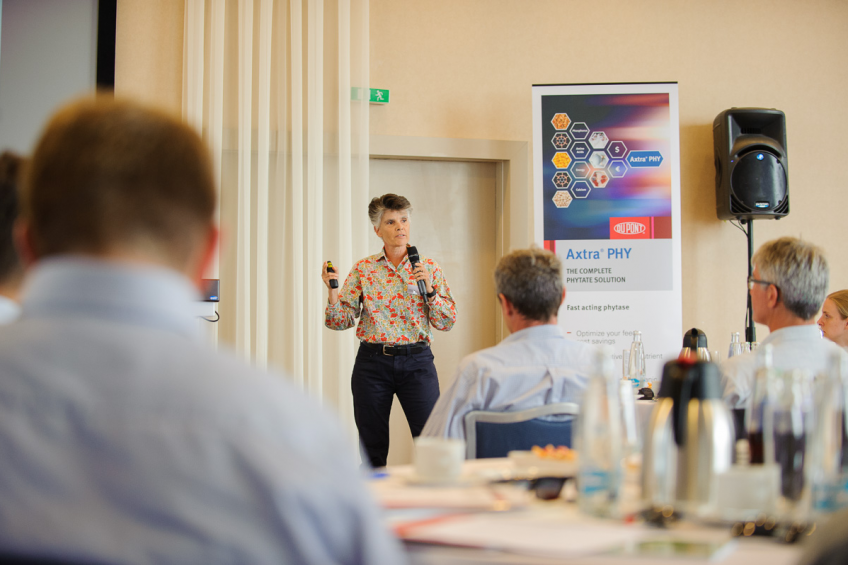Experts Discuss Latest And Future Trends at DuPont Phytase 101

Just before the official opening ceremony, DuPont kicked off ESPN 2015 in Prague by bringing together some of the world’s top academics to share the latest scientific findings on phytate (and other factors that should influence phytase choice and dose) and to discuss what the future holds.
Peter Plumstead, Associate Professor, Monogastric Nutrition at the University of Pretoria began the workshop with a discussion on “Winning with Phytase”. He discussed how improved performance and profitability can be achieved by gaining a greater understanding of the action of different types and doses of phytase on phytate at different stages of digestion, specifically at lower pH. He also looked at how the right phytase choices can positively impact interactions of phytate with calcium, protein, starch and sodium. The impact of sodium in the diet was also discussed in the context of wet litter.
Latest research on calcium and phosphorus metabolism
Dr C. Roselina Angel, Associate Professor, Department of Animal and Avian Sciences, unveiled the latest research on calcium and phosphorus metabolism and requirements in her talk on “Phytate, phytase and calcium interactions”, focusing on methodologies to evaluate phytase effectiveness (different types of phytase and different doses of those different types). She also looked at the importance of achieving the right calcium balance according to bird age and other factors.
Latest research on phytate degradation /nutrient digestion
Loek de Lange, Manager Poultry Cluster, Schothorst Feed Research shared the latest research on phytate degradation/nutrient digestion at various points in the digestive system, and look at how phytase choice and dose can influence this. He also looked at how minimum calcium requirements could be calculated and the effects of various phytases on amino acid digestion and utilisation.
Impact of sodium digestibility
Last but not least, a young scientist with a bright future in phytase research, Ha Hong Truong, Poultry Research Foundation, University of Sydney, shared highlights from several new/recently published studies that examine the impact of sodium digestibility particularly on glucose in four segments of the small intestine. She concluded that certain types of phytase can increase glucose and protein absorption by reducing the catabolism of amino acids.
Event moderator, Anne Marie Debicki-Garnier, Technical Director EMEA, Danisco Animal Nutrition, concluded, “The objective of this workshop was give poultry nutritionists the opportunity to discuss how to optimise results from phytase use with leading experts in the field in an informal and objective environment. Judging by the feedback we have received, it has given them a lot of useful and practical information that they can apply to their diet formulations.”
See event presentations /videos and get bonus materials to help you optimise your phytase use. You can also get a copy of the presentation by sending an e-mail to info@animalnutrition.dupont.com.













